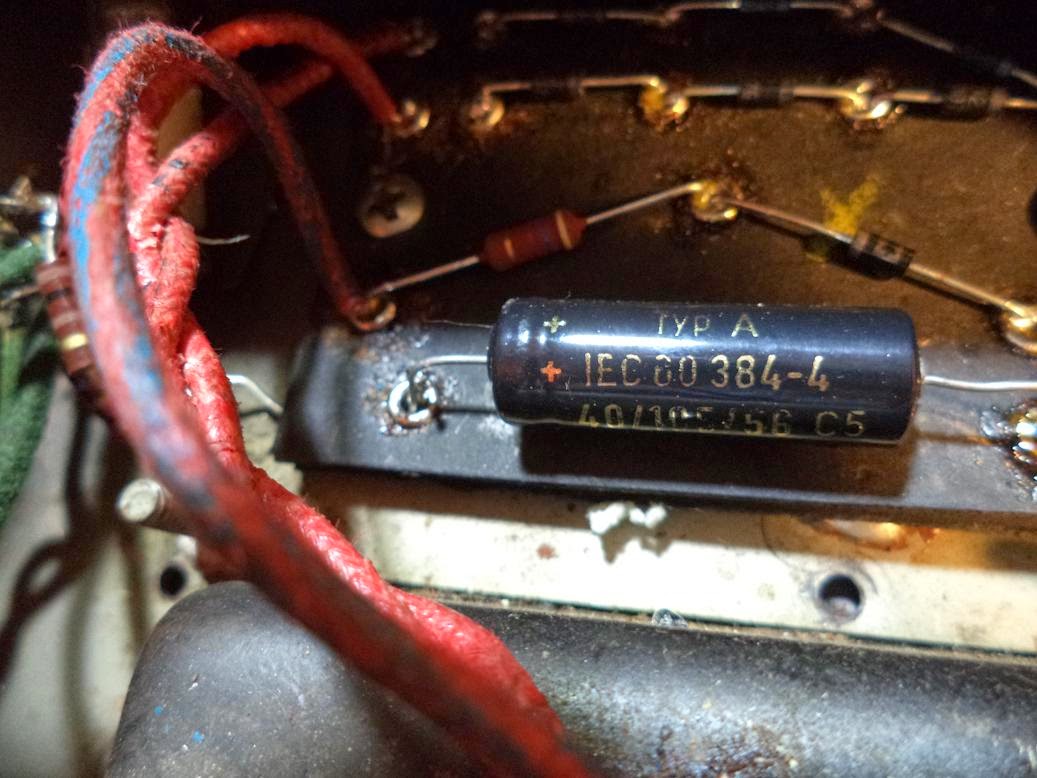I just finished repairing another Fender Hot Rod Deluxe. A lot of problems that people have with this amp often somehow involve the Drive circuit and a couple of resistors that are prone to overheating (R78 and R79). The issue here was that the Clean and Drive channels both worked fine, but when the More Drive switch was engaged, there was no output and the LED turned off instead of turning red.
The first thing I noticed was that the amp had been worked on before, clearly because of the two aforementioned resistors. (If you're interested, this
Premier Guitar article about the overheating resistor problem will bring you up to speed better than I can.) The first sign of previous work was that all of the bolts holding the circuit board to the chassis were missing. Oopsy. The only thing holding it in place is the board-mounted pots jacks, which are bound to fail eventually because of this. The second sign was the clearly non-original solder joints on R78 and R79. There was also hot glue or silicone under the resistors (Fig. 1a), which I don't think was stock in the 90s USA Hot Rod Deluxes (but I'm not positive about that). The back of the board all around those resistors was blackened as well (Fig. 1b), which I'm sure is the reason it was serviced.
 |
| Fig. 1a. Hot glue or silicone under R78 and R79 |
 |
| Fig. 1b. Blackened board and non-original solder beads on R78 and R79 |
After trying to figure out what had been done already, the first thing I checked was the solder joints on the Drive/More Drive LED (Fig. 2).
 |
| Fig. 2. The Drive/More Drive LED. |
I looked at the joints and poked the leads (labeled R, C, and G in Fig. 2 above). G(reen) and C(ommon) were fine, which I expected, since the Drive channel worked fine, and when that's engaged, the LED is green. When I poked the red lead, I could see the tip wiggling loosely in the bad solder joint (circled in Fig. 3). Even without wiggling it, you can see that it's a bad joint. I touched that up and the amp worked fine.
 |
| Fig. 3. The culprit: a bad solder joint on the Drive/More Drive LED. |
Most indicator lights have no effect on output, but in this amp, the LED is part of the Drive circuit. So if the LED isn't not functioning correctly, the Drive circuit isn't either. The LED's location in the circuit is outlined in red in Fig. 4.
 |
| Fig. 4. Unlike a lot of LEDs, the Drive/More Drive LED is part of the circuit, rather than just an indicator. |
It doesn't take to much research to realize that this is not an isolated case of this particular LED causing issues with the Hot Rod Deluxe, so if you're having issues with the Drive channel, it's definitely worth a quick peek.











